Difference between Inkjet and Dot Matrix Printers
Key Difference: Inkjet is a type of printer that prints images by propelling droplets of ink onto the paper. These printers are the most common type of printers that are available in households. Dot Matrix printers is a type of printer that produces documents by having a printer head run back and forth and strike against an ink soaked ribbon to produce characters.
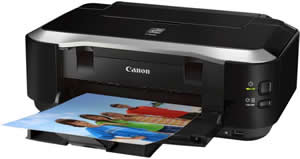 Printing is a useful feature in many businesses, schools and work. Printers are used for printing documents of photos. There are many different types of printers that are available on the market. Because of the variety and different processes, purchasing a printer becomes a tedious job. This is mostly because many people become confused between the various different printers and end up buying whatever the sales guy sells them. However, that printer may not be the right one for their needs. Inkjet and Dot Matrix are two different types of printers available; however, Dot Matrix is not widely available for commercial use. This printer is more commonly used in a niche market.
Printing is a useful feature in many businesses, schools and work. Printers are used for printing documents of photos. There are many different types of printers that are available on the market. Because of the variety and different processes, purchasing a printer becomes a tedious job. This is mostly because many people become confused between the various different printers and end up buying whatever the sales guy sells them. However, that printer may not be the right one for their needs. Inkjet and Dot Matrix are two different types of printers available; however, Dot Matrix is not widely available for commercial use. This printer is more commonly used in a niche market.
Inkjet is a type of printer that produces images by propelling droplets of ink onto the paper. These printers are the most common type of printers that are available in households. They are usually small in size and can range in prices, depending on the company and the functions it can perform. More expensive models might also come with copy, fax and scan functions. The concept of inkjet printing was developed in the 19th century, with the printer technology being developed in the late 1950s. Printers that could render digital images generated by computers were developed in the 1970s by Epson, Hewlett-Packard and Canon.
The inkjet printer works in a complicated way. It has a series of microscopic nozzles that spray a stream of ink directly onto the paper. The nozzles either have a high pressure pump or tiny heating elements behind them that helps deposit ink on the paper. There are two main technologies that are used in an inkjet printer: continuous (CIJ) and Drop-on-demand (DOD). In continuous technology, a high-pressure pump direct liquid ink from the cartridge through a gunbody and a microscopic nozzle, creating a continuous stream of ink droplets that are deposited on the paper. Extra unwanted ink is dropped into a gutter, which is recycled when the printer is active again. Drop-On-Demand is divided into thermal DOD and piezoelectric DOD. The thermal DOD uses a heating element to heat the ink in a chamber, which cools when applied to the paper. The piezoelectric DOD uses a piezoelectric material behind each nozzle instead of a heating element. In DOD, the printer cartridges fires ink only at special points on the surface that is required for creating an image.
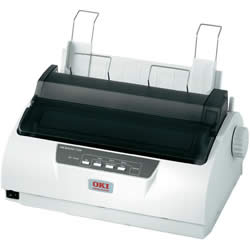 Dot Matrix printers is a type of printer that produces documents by having a printer head run back and forth and strike against an ink soaked ribbon to produce characters. The name Dot Matrix comes from the image of font which comes in dotted style. Dot matrix printers use similar technology to typewriters. Originally, Dot Matrix printers were quite popular printers used; they have now been replaced by inkjet or laser printers in today’s world. This is mainly due to cheaper cost in production for inkjet and laser technology. However, they have not completely become obsolete. These printers are still produced for niche markets such as cash registers, banks, fire alarm systems and ATMs.
Dot Matrix printers is a type of printer that produces documents by having a printer head run back and forth and strike against an ink soaked ribbon to produce characters. The name Dot Matrix comes from the image of font which comes in dotted style. Dot matrix printers use similar technology to typewriters. Originally, Dot Matrix printers were quite popular printers used; they have now been replaced by inkjet or laser printers in today’s world. This is mainly due to cheaper cost in production for inkjet and laser technology. However, they have not completely become obsolete. These printers are still produced for niche markets such as cash registers, banks, fire alarm systems and ATMs.
Dot Matrix works similar to a typewriter, but a little more complex. Dot Matrix produces documents by pushing small pins, known as ‘wire’ or ‘rod’ against a ribbon dipped in ink to the surface of a paper, and creates the text. This rod is controlled by tiny electromagnets or solenoids. Between the ribbon and the surface there is a plate with holes that guide the pins and separate the rest of the ribbon from the paper. The pins are a part of the printerhead. The printer prints one line of text at a time. There are two different types of printers: serial dot matrix printers and line dot matrix printers. Serial dot matrix uses a horizontally moving print head. However, in Line dot matrix uses a fixed printer head that is almost as wide as the paper. Serial dot matrix printers can produce 50-550 characters per second (cps), while line dots can produce 1000 cps.
|
|
Inkjet Printers |
Dot Matrix Printers |
|
Invented |
Developed in the early 1950s. |
Introduced by Digital Equipment Corporation in 1970. |
|
How it works |
Inkjet printers spray liquid ink on paper through microscopic nozzles. |
Dot Matrix works having pins pushed against an ink soaked ribbon to paper. |
|
Types |
Continuous (CIJ) and drop-on demand (DOD). |
Serial Dot Matrix printers and Line Dot Matrix. |
|
Price per page |
USD 0.20 color page; USD 0.4-0.5 black and white page. |
Copies are quite cheap. |
|
Cost for basic printer |
Approximately USD 100-150 |
Basic cost of printer is quite expensive. Compared to an inkjet, dot matrix can cost between two to ten times more. |
|
Printing speed |
6 pages a minute |
30-550 characters per second. |
|
Quality |
Printing quality is good, specially for smaller fonts. |
Printing quality is bad if printing images. In terms of text, printing is fine. |
|
Color Printing |
Yes provides color printing. |
Limited color printing. |
|
Black and White Quality |
Black and white quality is excellent, specially with small fonts. |
Can print adequate quality images. |
|
Color Quality |
Color printing is sharp and excellent. |
Only works best with low-res images. |
|
Size |
Smaller and more compact. |
Size ranges depending on usage. New compact ones are also available. |
|
Features |
Can be used for wider range of papers (photo paper, vinyl, self-adhesive papers), accurate photographic images, ink is not waterproof. |
Used for a variety of purposes. Can print on various types of papers. |
|
Usage |
More commonly used for homes as the unit is smaller and ink is cheaper. |
Used to be used for office uses, but now only used by select places such as banks. |
|
Maintenance |
Cheaper |
Expensive, parts are hard to come by. |
|
Advantages |
Quieter in operation, high print quality, no warm up time, low cost per page |
Cheaper to print as ribbon is cheap. |
|
Disadvantages |
Ink is expensive, issues with ‘intelligent’ ink cartridges, lifetime of inkjet prints produced by aqueous inks is shorter, ink is not waterproof, and nozzle is prone to clogging. |
Initial purchase is expensive, maintenance is expensive, prints is not fast, makes noise. |
Image Courtesy: gadgetspeak.com, advancetec.co.uk





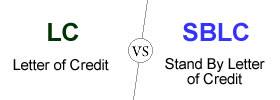

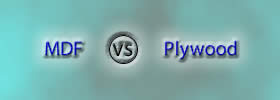
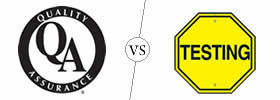
Add new comment